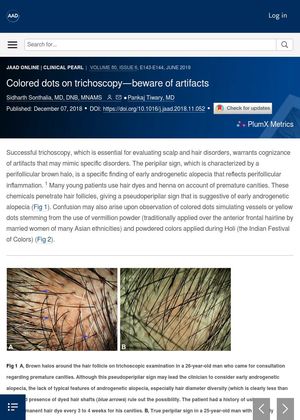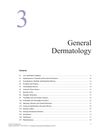Colored Dots on Trichoscopy—Beware of Artifacts
December 2018
in “
Journal of The American Academy of Dermatology
”

TLDR Some hair products can create false signs on scalp examinations, leading to wrong diagnoses.
In 2019, a study highlighted the importance of recognizing artifacts in trichoscopy, a method used for evaluating scalp and hair disorders. The study emphasized that certain chemicals and substances, such as hair dyes, henna, and vermillion powder, can create misleading signs that mimic specific disorders like early androgenetic alopecia. For instance, hair dyes and henna can penetrate hair follicles, creating a pseudoperipilar sign that may be mistaken for early androgenetic alopecia. Similarly, vermillion powder and powdered colors used during cultural events can create colored dots that may be confused with other symptoms. The study stressed the need for clinicians to consider these potential artifacts to avoid misdiagnosis.





